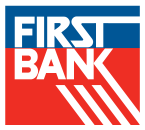Over Half of Americans Couldn’t Cover a $1,000 Unexpected Expense in 20231
Has a car ever failed to start for you on your way to work just after the warranty expired? Has your dishwasher or refrigerator ever decided to stop working just ahead of your planned “dream” vacation? Have you ever had your hours reduced at work or, even worse, experienced a complete layoff? No, this isn’t a reenactment of the introduction of a sitcom, it is actual life and, unfortunately, any of these can happen at any moment—some even at the same time. Having a cushion or extra money in the bank does more than cover you when “life happens”, it also give you a sense of control and financial security should an unexpected emergency arise.
Last year, the savings of average Americans declined. Many reasons factored into this decline, like high inflation and more opportunities to spend than during the pandemic shutdowns. In fact, it’s estimated that nearly 60% of the American population now couldn’t cover even a $1,000 emergency expense. Factor in that approximately six in 10 companies will likely consider laying off employees in 20232, the rising cost of replacing or repairing items, and rising interest rates on many credit cards, it’s prudent to start creating a strategy on how to build-up your emergency savings, pronto.
It’s easy to get started:
1. Open a savings account online with a bank you already know and trust, like First Bank. With as little as $100, you can open a First Bank Statement Savings account and start automating your savings with each paycheck. If you set your savings amount to deduct from each and every paycheck, you can set it, forget it, and watch your money grow. Aim to build up an emergency savings amount that’s worth three to six months of living expenses as a “rainy day” fund. For instance, if your mortgage, utilities, transportation, insurance, food expenses, and discretionary spending cost you around $5,000 per month, then you’d want to set a goal of saving one month of $5,000 first, then three months at $15,000 second, and then continue the momentum and eventually save as much as $30,000. These amounts may sound daunting but by saving a little each month, you can steadily build up your rainy day savings.
2. Consider adding an additional account for longer-term savings. Is your goal to cover your bare bones necessities for three to six months or are you saving for something specific, like an upcoming wedding or down payment on a house? Perhaps, you simply want to beef up your long-term savings. If you don’t need access to it right away or the foreseeable future and want to earn exceptional returns on your money, consider opening a Certificate of Deposit (CD) or a Money Market Account. Both typically offer you higher returns than a standard savings account. With the Money Market Account, you’ll be able to make a certain number of easy withdrawals and earn higher interest rates as your balance grows. A CD will tie your savings up for a specified time period, but you will typically earn a higher rate of return on your money in exchange
3. Already have a savings account, but need to find ways to save? There are many ways to find opportunities to contribute to savings every month, even with higher prices and inflation. Regardless of your household income, there are always ways to reduce your spending and free up room in your budget.
To help increase your savings, consider banking any tax refunds, annual bonuses, or commissions you receive this year into your emergency savings rather than spending them on trips or shopping sprees. Research side hustles or side jobs that you could add to your income. Take whatever skills or any hobbies you have, like baking, graphic design, or furniture refinishing, and find ways to earn additional income with them. Hey, maybe your side business will even direct you into a new, lucrative career path.
Lastly, conduct a monthly evaluation of your spending habits and an annual review of your subscriptions, insurance, and phone/streaming services. These small, monthly spending line items can really add up big.
No matter where you’re at in your financial journey, building up your short and long-term savings are an essential first step in achieving your goals. Get started saving today.
Click to find out more about First Bank’s Savings Account options and find out which savings vehicle is right for you.
1Bankrate’s 2023 Annual Savings Report
2Resume Builder, 1 in 3 Companies Anticipate Laying Off 30% or More of Workforce in 2023,
January 19, 2023


